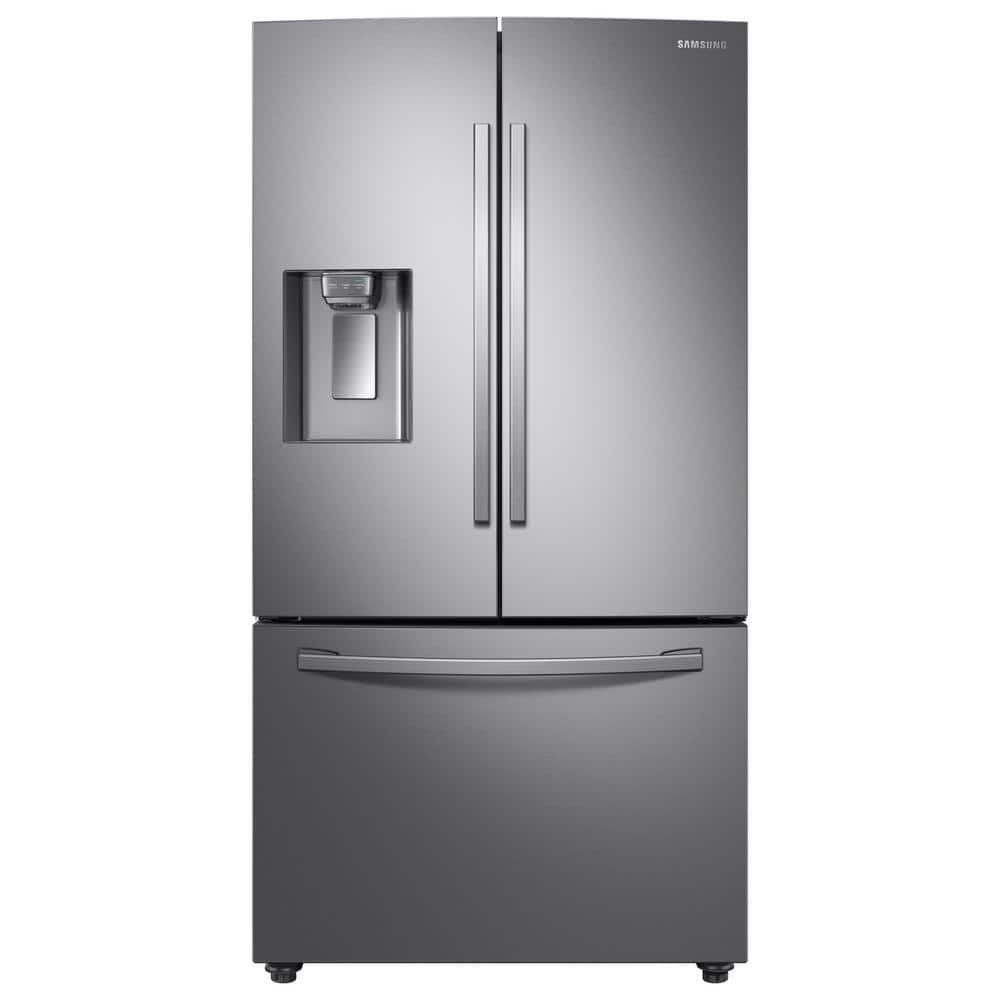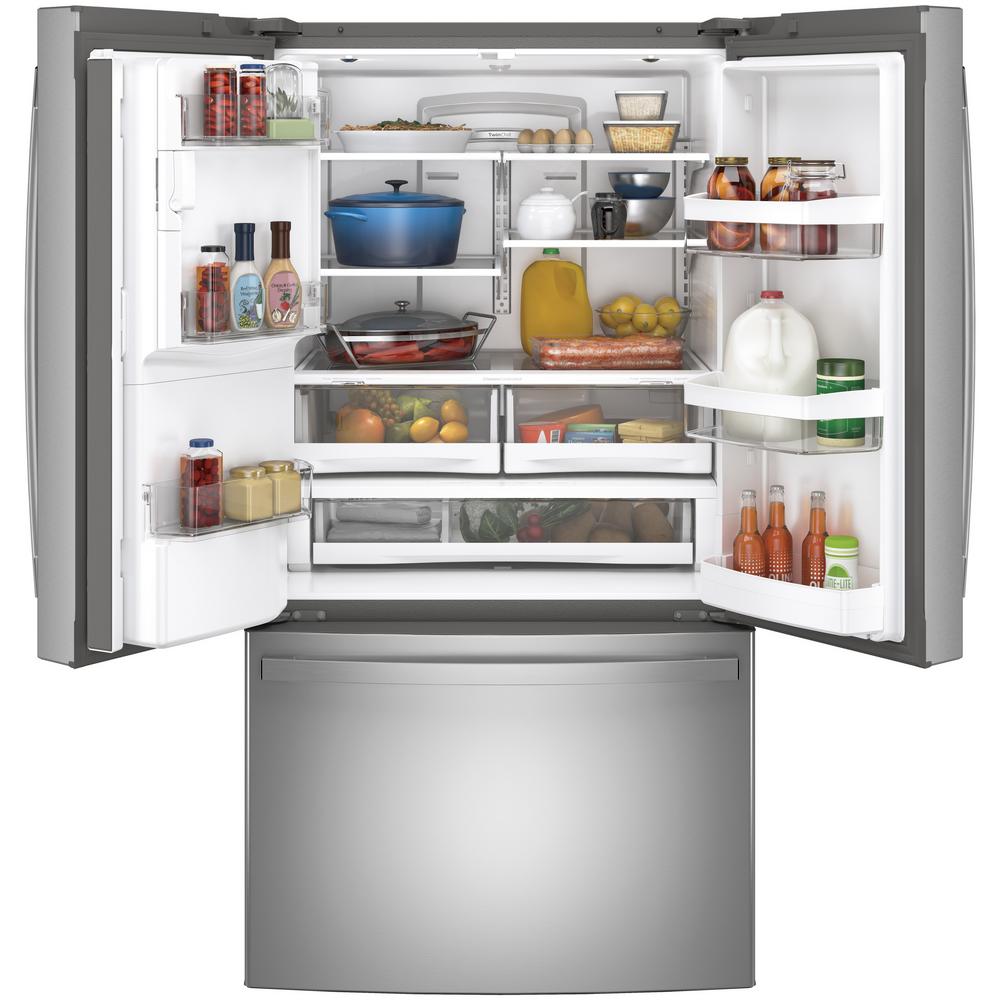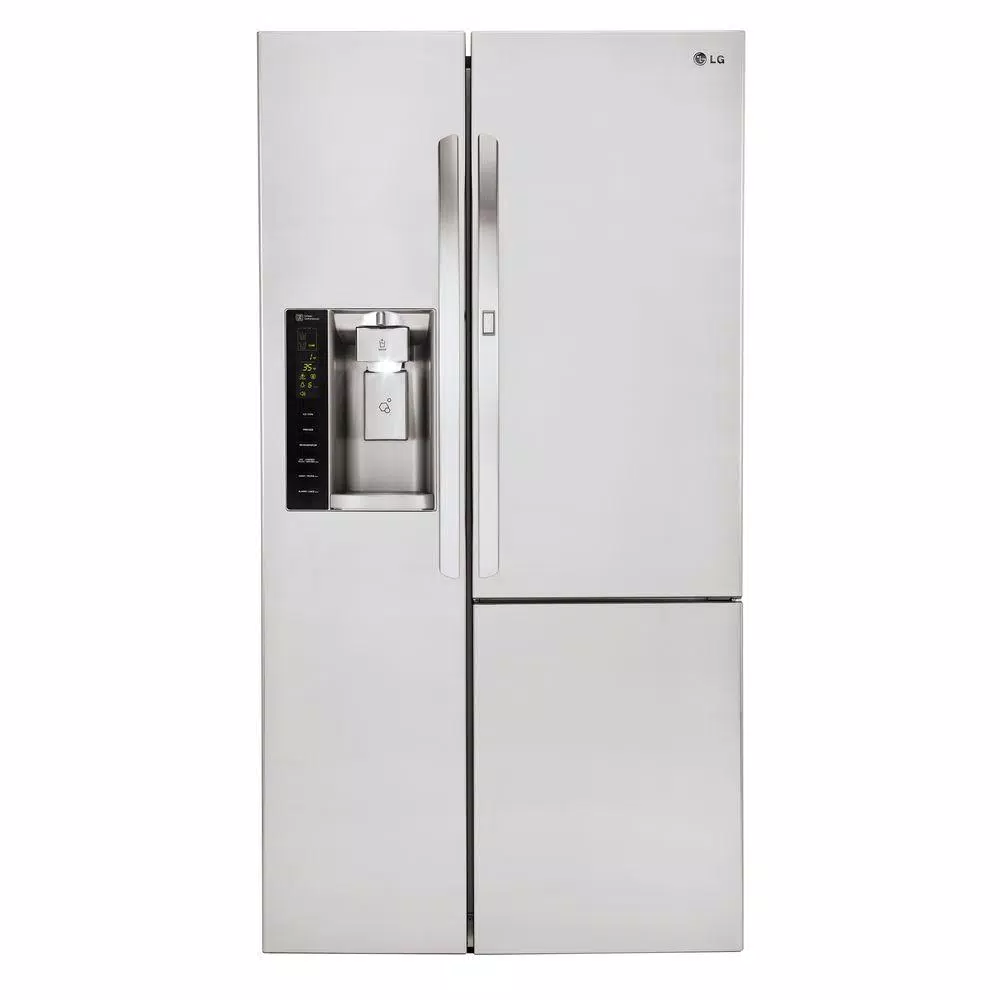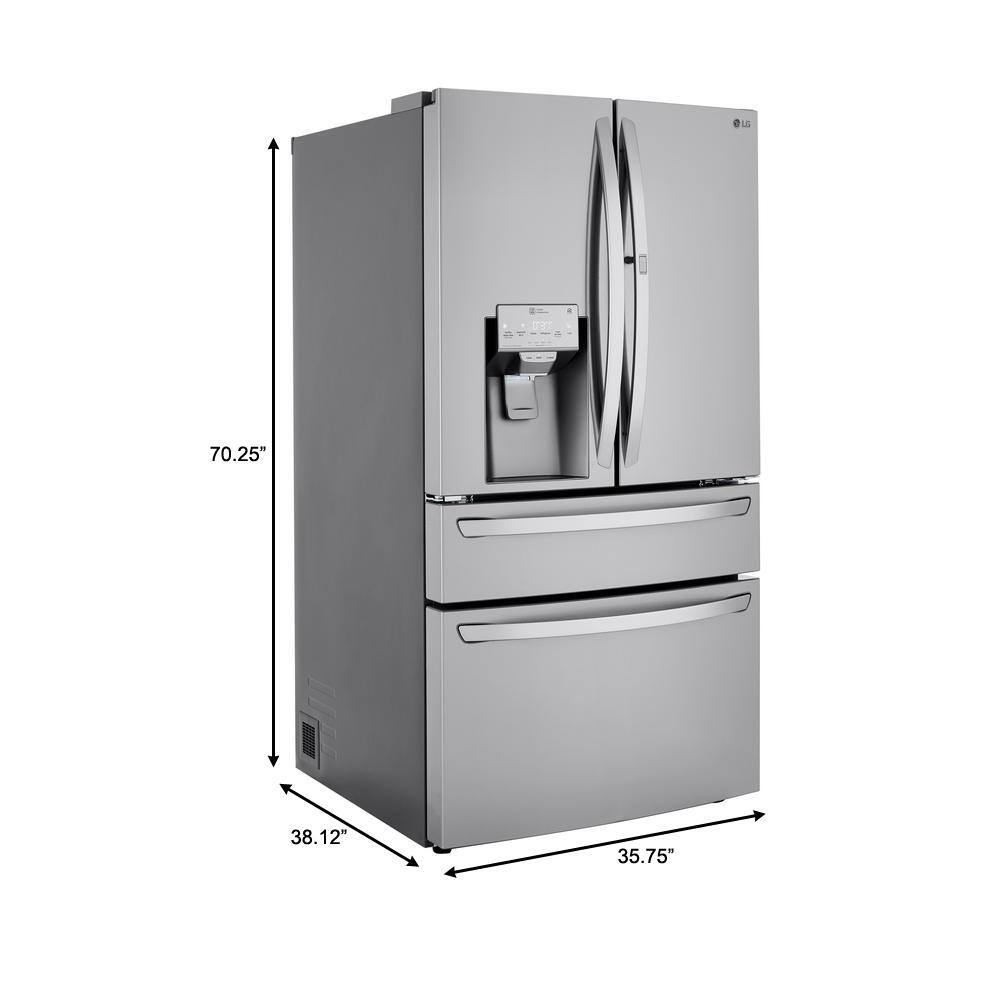Samsung 23 cu. ft. 3-Door French Door Refrigerator in Stainless Steel with CoolSelect Pantry, Counter Depth
Twin Cooling Plus – keeps food fresher longer. CoolSelect Pantry chills or defrosts food to ideal temperatures. Ice Max stores up to 2.7 lbs. of ice.
A full depth refrigerator that is beautifully designed, with a minimal dispenser, sleek-edge doors, and modern handles. CoolSelect Pantry provides a full-width drawer to chill or defrost food to ideal temperatures. Now available in beautiful Tuscan Stainless.
- Twin Cooling Plus keeps food fresher longer
- CoolSelect Pantry chills or defrosts food to ideal temperatures
- Ice Max stores up to 42 lbs. of ice
- Fingerprint Resistant Finish helps reduce smudges and minimize cleaning
- Wi-Fi and Bixby Enabled control and monitor your fridge remotely
- Adjustable Shelves to fit taller items
- High-Efficiency LED Lighting designed to beautifully light up the interior of your fridge
- Accessibility (ADA Compliant) with easy to reach controls for everyone
- ENERGY STAR Certified that is Eco-friendly and energy efficient
- Also available in Black Stainless Steel and Tuscan Stainless Steel
- Also includes a water filter indicator to notify when it needs to be changed
Additional information
| Depth (Excluding Handles) | 28.5 |
|---|---|
| Depth (Including Handles) | 31 |
| Depth (Less Door) | 24 |
| Depth With Door Open 90 Degrees (In) | 42.75 |
| Height to Top of Door Hinge (in.) | 70 |
| Height to Top of Refrigerator (in.) | 68.75 |
| Product Depth x Height x Width (in.) | 31 x 70 x 35.75 |
| Refrigerator Width (In.) | 35.75 |
| Certifications and Listings | ADA Compliant,Energy Star |
| Manufacturer Warranty | One (1) Year All Parts and Labor Five (5) Years Sealed System Parts and Labor Ten (10) Years Compressor Parts Only |






by John
I love the openness of the main area! The ice maker you can’t open to empty out in like a cooler if you wanted too.. the freezer drawer is spacious,very nice.
by James
My only complaint is that the ice maker/water dispenser takes up a lot of room in the fridge. The fridge and freezer work well overall.
by Steve
Love this refrigerator! Just the right size.
by Chris
after a poor delivery well below average, folks with no knowledge of the refrigerator delivering, and their refusal to hook up the Samsung plastic water line to the existing plastic water line (I had to do it myself ) and I am disabled, the refrigerator is top of the line excellent in every way. Absolute top quality refrigerator.
by Clark
Perfect for my son and I. Not too big just right. Smart hook up was working great and easy.